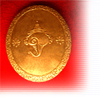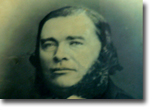|
He
shifted the focus of the institution from astronomy to meteorology
and terrestrial magnetism. He set up a majestic observatory in Agastiyar
peak which is around 6000 feet above sea level. His residence which
is just behind the observatory building in Thiruvananthapuram is still
in existence, though in a dilapidated state.
Broun
seems to have been an excellent writer as it is evident from the following
picturesque description of the on set of the monsoon quoteted in the
Travancore manuel by Nagamayyah.
Allen
Broun on Monsoon
The
Royal Society President Sir Joseph Delton Hooker spoke on Broun’s
contributions in November 30, 1878 as follows:
Address of Sir Joseph Dalton Hooker, C.B., K.C.S.I., The President,
Delivered
at the Anniversary Meeting of the Royal Society, on Saturday, November
30, 1878.
Editor’s
note: the printed pamphlet’s original page numbers are shown
in brackets (5) to make it easier to cite this version, and the page
breaks are shown with a thin red line. The original title page and
its blank reverse had no numbers and the first page of text was numbered
3. The original footnotes are shown in the positions where they originally
occurred.
A Royal Medal has been awarded to Mr. John Allan Broun for his investigations
during thirty-five years in magnetism and meteorology, and for his
improved methods of observation.
When the labours of Gauss had given an impetus to the study of terrestrial
magnetism by rendering precision possible, Observatories devoted to
this branch of research, in conjunction with meteorology, and for
his improved methods of observation.
When the labours of Gauss had given an impetus to the study of terrestrial
magnetism by rendering precision possible, Observatories devoted to
this branch of research, in conjunction with meteorology, began to
rise in various places. The late General Sir T.M. Brisbane erected
one at Makers town, in Scotland, and placed it under the direction
of Mr. Broun, who remained in charge of it from 1842 to 1850. His
observations and their results, have been commended by Magneticians
and meteorologists, for the skill employed in the development of new
methods of reduction and investigation.
In 1851 Mr. Broun went to India to organize and take charge of a similar
Observatory established at Trevandrum by His Highness the late Rajah
of Travancore. Here he remained for thirteen years, accumulating results
of very great value, then first installment of which, consisting of
a volume on the magnetic declination, was published some years ago.
Magneticians look eagerly towards the completion of this publication
when the means necessary for the purposed shall have been furnished
to Mr.Broun.
While in India he established an Observatory on a mountain peak 6,000
feet above the sea, and fitted it up with a very complete assortment
of scientific instruments. This was an undertaking of a very arduous
nature, affected in a wild country, and presenting great difficulties
in the erection of instruments and obtaining trained observers.
Shortly after the commencement of magnetic observatories, Mr. Broun
indicated the insufficiencies of the methods then in use for determining
coefficients and correcting observations and he devised new methods
for these ends, the principal of which have been generally adopted.
This is not the place in which to give a complete catalogue of Mr.
Broun’s researches in magnetism and meteorology, extending as
they do over a period of thirty-five years, but I may indicate those
of his result’s that are of the greatest importance. Among them
are the establishments of the annual laws of magnetic horizontal force,
exhibiting maxima at the solstices and minima at the equinoxes. Mr.
Broun was also the first to give in a complete form the laws of change
of the solar-diurnal variation of magnetic declination near the equator,
showing the extinction of the mean movement near the equinox. His
researches on the lunar-diurnal variation of magnetic declination
are of very great interest. Besides being an independent discoverer
of the existence of this variation, he showed that near the equator
its law in December was the opposite of that in June. He found, too,
that the lunar-diurnal variation was in December sometimes greater
than the solar-diurnal variation- that the lunar action.
[26]
was
reserved at sunrise and that it was much greater during the day than
during the night, whether the moon was above or below the horizon.
Finally, he found that the lunar-diurnal law changed (like the solar-diurnal
law at the equator) near the equinoxes, so that, as a consequence,
the laws for the southern and northern hemispheres were of opposite
natures.
Another and very remarkable fact discovered by Mr. Broun was that
the variations from day to day of the earth’s daily mean horizontal
force were nearly the same as the world over. He found certain oscillations
in these daily means, which were due to the moon’s revolution,
and others having a period of twenty-six days; the latter he considered
as due to the sun’s rotation. It results from these investigations
that the observed variations of the earth’s daily mean horizontal
force have been represented with considerable accuracy in all their
more marked features, by the combination of the means calculated for
these different solar and lunar periods. During the discussion of
these periods, Mr.Brouns found that the great magnetic disturbances
were apparently due to actions preceding from particular points or
meridians of the sun- a fact this (if verified) of very great importance.
In meteorology he has shown the apparent simultaneity of the changes
of daily mean barometric pressure over a great part of the globe,
and he has likewise discovered a barometric period of twenty-six days
nearly. He was also the first to commence and carry out, during several
years, a systematic series of observations of the motions of clouds
at different heights ion the atmosphere; and, lastly, he has found
certain laws connecting the motions of the atmosphere, and the directions
of the lines of equal barometric pressure.
|

